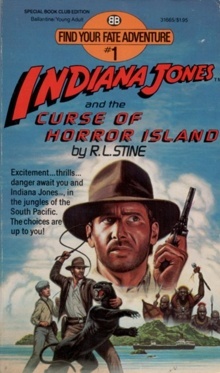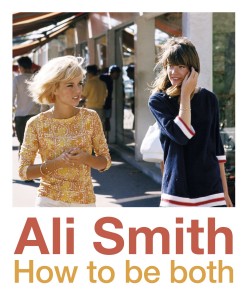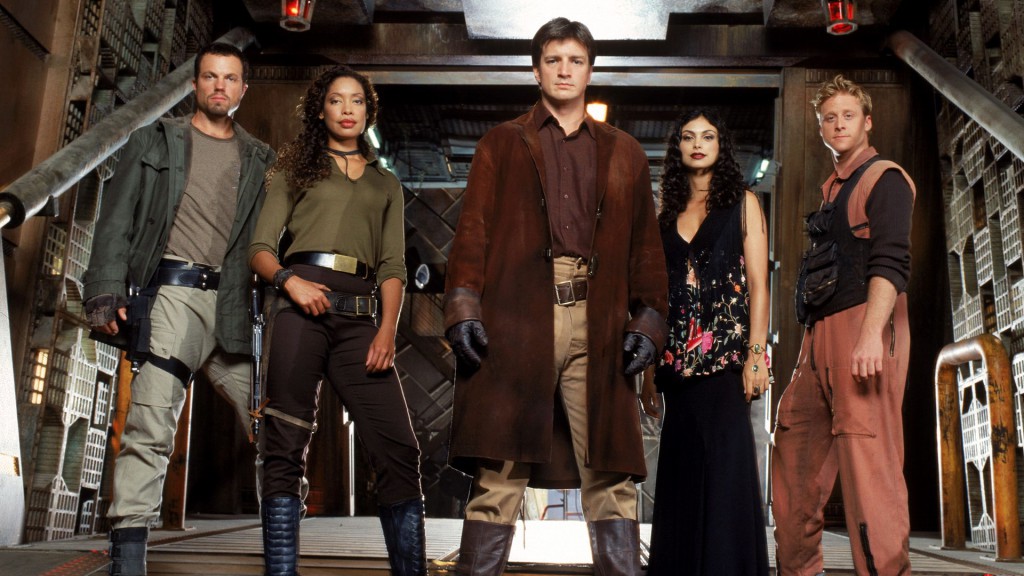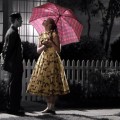I recently found myself in a heated argument with a friend about an author’s intentions and whether readers should respect them in always reading the book in the way it was intended to be read: from start to finish. The opposing argument was that art – a painting, sculpture, film, book, etc – was in the eye of the beholder, therefore, the reader/viewer/appreciator should be able to consume the art in whatever way they choose. If a reader wants to read the last chapter of a book first, that’s their prerogative.
 I disagree… to an extent. Obviously, neither I nor any other creator of art has any control over how the art is consumed once it makes it into the public domain, but if the artist intended for it to be consumed in a certain way, surely that’s how it should be experienced – at least for the first time? How those consumers choose to interpret the art, what opinions they form, and whether they come back to the piece in different ways at a later time is absolutely up to them, not the artist. But if an artist presents the art in a certain way (say, one scene/chapter before another), isn’t this the way it should be tackled in the first instance?
I disagree… to an extent. Obviously, neither I nor any other creator of art has any control over how the art is consumed once it makes it into the public domain, but if the artist intended for it to be consumed in a certain way, surely that’s how it should be experienced – at least for the first time? How those consumers choose to interpret the art, what opinions they form, and whether they come back to the piece in different ways at a later time is absolutely up to them, not the artist. But if an artist presents the art in a certain way (say, one scene/chapter before another), isn’t this the way it should be tackled in the first instance?
Perhaps you think that art should always be interpreted without reference to the author’s intention. This certainly applies when applying your own interpretation of what is presented and is undeniably beneficial when it comes to artists defending art that was interpreted ‘the wrong way’ but does that apply to how you view/access that art? A painting is designed to be assessed by being looked at, not touched, for instance. So when it comes to an artist’s intentions as to how their piece is to be consumed, how much should consumers concern themselves with a creator’s wishes?
Reading into it: Was it intentional?
As a literature student, I remember sniggering at the way my teachers read so much (especially in terms of sexual innuendo – they saw it EVERYWHERE) into the texts we studied. I would think to myself, ‘Would the author really have thought about all that? Did they really mention that particular flower because of its historical associations to a particular meaning? What if the cleaning of a spear is just a cleaning of a spear and nothing to do with phallic symbolism?’ (See below in ‘Shared Experiences’ for a discussion of the importance of what the audience reads into a text.)
Of course, for many texts – especially ‘classics’ – we will never know if the author really intended to embed that meaning. But if Mary Shelley were alive today, would you want to be able to ask her what she meant? Would it change how you as a reader interpret and respond to the text? Should it? One of my favourite new artists, Raleigh Ritchie, recently indulged his fans in a Q&A on twitter. I took the opportunity to query the story behind the song ‘Stronger than ever’ (a personal favourite).
There was, but whatever it means to you is correct. https://t.co/bVMsvky2Za
— Raleigh Ritchie (@RaleighRitchie) February 26, 2016
His reply, though skilfully avoiding actually being an answer, hit the nail on the head: the song (or any piece of art) means whatever the reader/listener/viewer feels it does. How the person experiencing the art feels about it is all that really matters.
Experiments in structure and delivery
If meaning derived from art is only in the eye of the person experiencing it, does that mean the intended delivery of the artwork isn’t important either? Perhaps, as a writer myself, I’m too precious about author intentions. If I choose to order chapters, sections, so on, in a specific way, there’s a reason I’ve done that. For instance, some books begin with the ending before the rest of the text. The author has chosen that as the structure to create an effect, to influence the way the book is read and interpreted.
 However, even for a medium so well established as the novel, structure and presentation of content is not set in stone. Children’s ‘Choose Your Own Adventure’ books have been playing with structure and the order of delivered content for decades. In 2014, Ali Smith published How to be Both, a novel split into two separate narratives. But there was a twist – depending on which (random) copy you purchased, you might read Francesco del Cossa’s story first while someone else found George’s story as the first half of the novel. The story is designed to work this way, an intentional artistic choice by an inventive writer.
However, even for a medium so well established as the novel, structure and presentation of content is not set in stone. Children’s ‘Choose Your Own Adventure’ books have been playing with structure and the order of delivered content for decades. In 2014, Ali Smith published How to be Both, a novel split into two separate narratives. But there was a twist – depending on which (random) copy you purchased, you might read Francesco del Cossa’s story first while someone else found George’s story as the first half of the novel. The story is designed to work this way, an intentional artistic choice by an inventive writer.
How you choose to present your art to the audience is part of the artistic choice, an integral part of the creation. If this aspect of your art were to be tampered with, would it still be your creation?
Director’s cuts, intended airing orders, fan re-cuts
The idea that consumers of art could hack away at the material to do with it what they will is not always a bad thing. There are plenty of great fan-made homages to beloved fictional universes, such as The Avengers introduced in the style of the Friends opening credits or a re-cut Stand By Me trailer in the style of Brokeback Mountain. But there are also many examples of art being tampered with in less respectful ways.
Many films are released with extensive studio changes and creative differences with the directors, for instance, the recent Fantastic 4. Blade Runner is a notorious example where the studio insisted that Ridley Scott record a noir-style voice over to the opening of the film, something he despised. The original cinematic release is now difficult to come by, with the Director’s Cut being the director’s (obviously) and fans’ preferred version.
 In other instances, studio execs decide to air a series out of order (Firefly, Wonderfalls, Bitch in Apartment 23). The creative drivers behind these works will cry out that their stories were ruined by a lack of respect for their craft – changing it into something unrecognizable. And yes, that includes something as simple as changing the order. It makes no sense to air an episode where one character declares their love for another before the episode where that same character realizes he has feelings for the other. For fan favourite shows where networks messed up the order, you will often find posts directing viewers to watch the series in the ‘correct’ order. After all, the order does matter.
In other instances, studio execs decide to air a series out of order (Firefly, Wonderfalls, Bitch in Apartment 23). The creative drivers behind these works will cry out that their stories were ruined by a lack of respect for their craft – changing it into something unrecognizable. And yes, that includes something as simple as changing the order. It makes no sense to air an episode where one character declares their love for another before the episode where that same character realizes he has feelings for the other. For fan favourite shows where networks messed up the order, you will often find posts directing viewers to watch the series in the ‘correct’ order. After all, the order does matter.
Shared experience
Art can – and should – be interpreted without reference to the author’s intention as to embedded meaning, but arguably the enjoyment of experiencing a piece comes from a shared experience. You and your peers go into a film, watch it from beginning to end before discussing your views. How you internalised that experience will likely be radically different to the person who sat next to you throughout the very same film with almost the exact same view of the screen. If you choose to experience a piece in a different way, you will not have watched/read/experienced the same work as your peers (If I read a book backwards, is it the same book you read? If I ‘listen’ to a piece of music through the vibrations in the floor, is it the same experience?). This makes discussion about an artwork difficult to establish – if you aren’t talking about the same thing, what can such a discussion achieve?
How a text is interpreted by different audiences is important. A book that was once popular might now be considered politically incorrect. The modern audience has a different contextual reference point than, say, the young woman who read ‘Instructions for a young bride’ when it was first published in 1894. These different lenses from which to view a text are vital to the interpretation of art, but would the analysis mean anything if discussions weren’t jumping off from the same starting point?
You might read a novel and wonder at the author’s structure, convinced that it would have made more sense or had a better flow if they’d switched up a few scenes. But if you had read it in a different order, your experience of it would have differed from your peers. Any shared experience or analysis would be meaningless. The creator’s intentions, the audience’s readings of a text, and any ‘remixes’ are all important parts of experiencing art. We writers, filmmakers, painters, sculptors, musicians, etc might want to be prescriptive in how people consume what we create, but at the end of the day, all we should really hope for is that people respect the text itself, even if it takes place without reference to what the creator’s intentions.
 Pop Verse Pop Culture Universe
Pop Verse Pop Culture Universe






